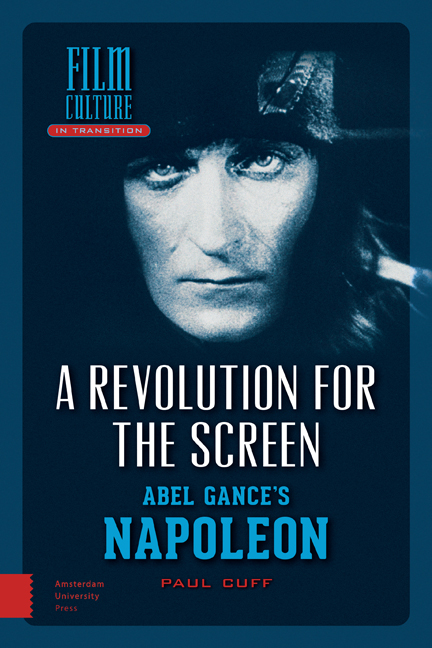Book contents
- Frontmatter
- Dedication
- Contents
- List of Illustrations
- Note on Formatting
- Acknowledgements
- Foreword
- Preface: Critical perspective
- 1 Napoleonic Ambition and Historical Imagination
- 2 Shaping Expectations: The Young Napoléon Bonaparte
- 3 Civilization and Savagery: Visions of the French Revolution
- 4 Mortal Gods: Voices of Power and of Providence
- 5 The Dark Light of Napoleonic Cinema
- 6 A View from the Margins of History
- 7 Melodrama and the Formulations of Family
- 8 Worlds in Transition: Class, consumption, Corruption
- 9 Death and Transfiguration
- Conclusion: The Case for Enthusiasm
- Filmography and Bibliography
- Index
- Film Culture in Transition
Preface: Critical perspective
Published online by Cambridge University Press: 10 December 2020
- Frontmatter
- Dedication
- Contents
- List of Illustrations
- Note on Formatting
- Acknowledgements
- Foreword
- Preface: Critical perspective
- 1 Napoleonic Ambition and Historical Imagination
- 2 Shaping Expectations: The Young Napoléon Bonaparte
- 3 Civilization and Savagery: Visions of the French Revolution
- 4 Mortal Gods: Voices of Power and of Providence
- 5 The Dark Light of Napoleonic Cinema
- 6 A View from the Margins of History
- 7 Melodrama and the Formulations of Family
- 8 Worlds in Transition: Class, consumption, Corruption
- 9 Death and Transfiguration
- Conclusion: The Case for Enthusiasm
- Filmography and Bibliography
- Index
- Film Culture in Transition
Summary
Don't ask me to be a critic [...] What you characterize as fault, I call accent. I accept, and give thanks. Having inherited the marvels of human imagination, I refuse to act like an auditor classifying assets [...] A masterpiece offers me its hospitality: I approach it, hat in hand, and admire the countenance of my host. (Hugo 1864: 372)
The scale of Abel Gance's work presents a monumental challenge for film scholars. Paper documentation relating to his career currently occupies over 400 boxes in the Paris archives of the Bibliothèque Nationale and the Cinémathèque Française. The celluloid legacy of his major silent films is equally vast: J’ACCUSE! (1919) had an original length of 5250 metres, occupying over four hours of screen time; La Roue (1922) premiered at 10,730m and lasted over eight hours in the theatre. NAPOLÉON, VU PAR ABEL GANCE (1927) consumed 400,000m of film stock during its production (equal to 290 hours of footage), and the longest version of the completed film ran to 12,800m – 666,000 frames of celluloid that took over nine hours to project. The amount of lost evidence is also daunting: up to a third of the material from each of the above films no longer exists, whilst a large proportion of paperwork has yet to be recorded. Gance's reputation has thus been defined as much by obscurity and incompletion as by grandeur and excess. In order to outline my own approach to NAPOLÉON, this preface must first provide an overview of the film's physical and critical chronology – two histories that are inseparably linked.
In 1923, Gance wrote the synopses of six films that would cover NAPOLÉON Bonaparte's life from childhood to death. Over the next year, he worked on the full screenplay for the first part of his series, completing the final of three drafts just before production began in January 1925. After eighteen months of filming, spanning the liquidation of his first production company and the formation of another, Gance realized he was running out of time and space. He had already exceeded the budget for all six films making just the first, and hadn't reached the end of his 1924 screenplay – despite having used a record amount of celluloid.
The logistical problems of NAPOLÉON'S temporal breadth were compounded by the technical challenges that the film generated.
- Type
- Chapter
- Information
- A Revolution for the ScreenAbel Gance's Napoleon, pp. 23 - 30Publisher: Amsterdam University PressPrint publication year: 2015



